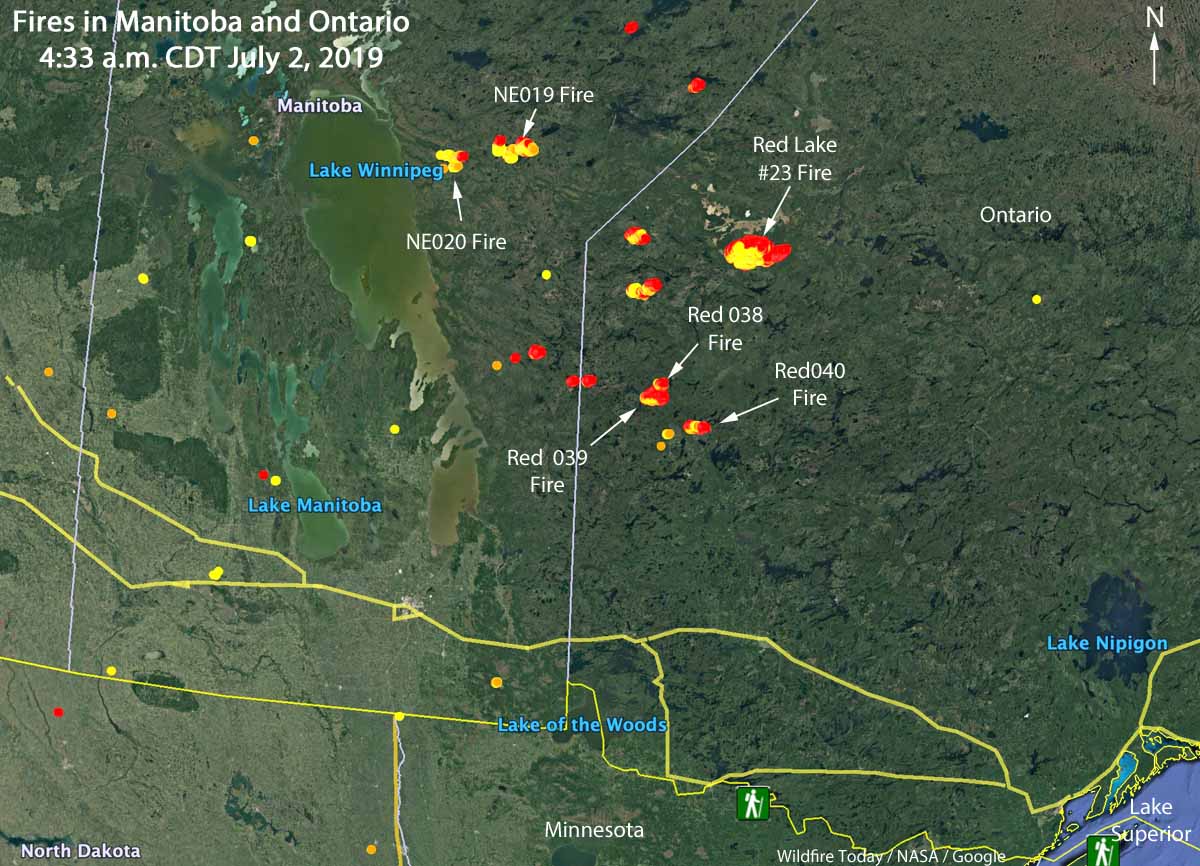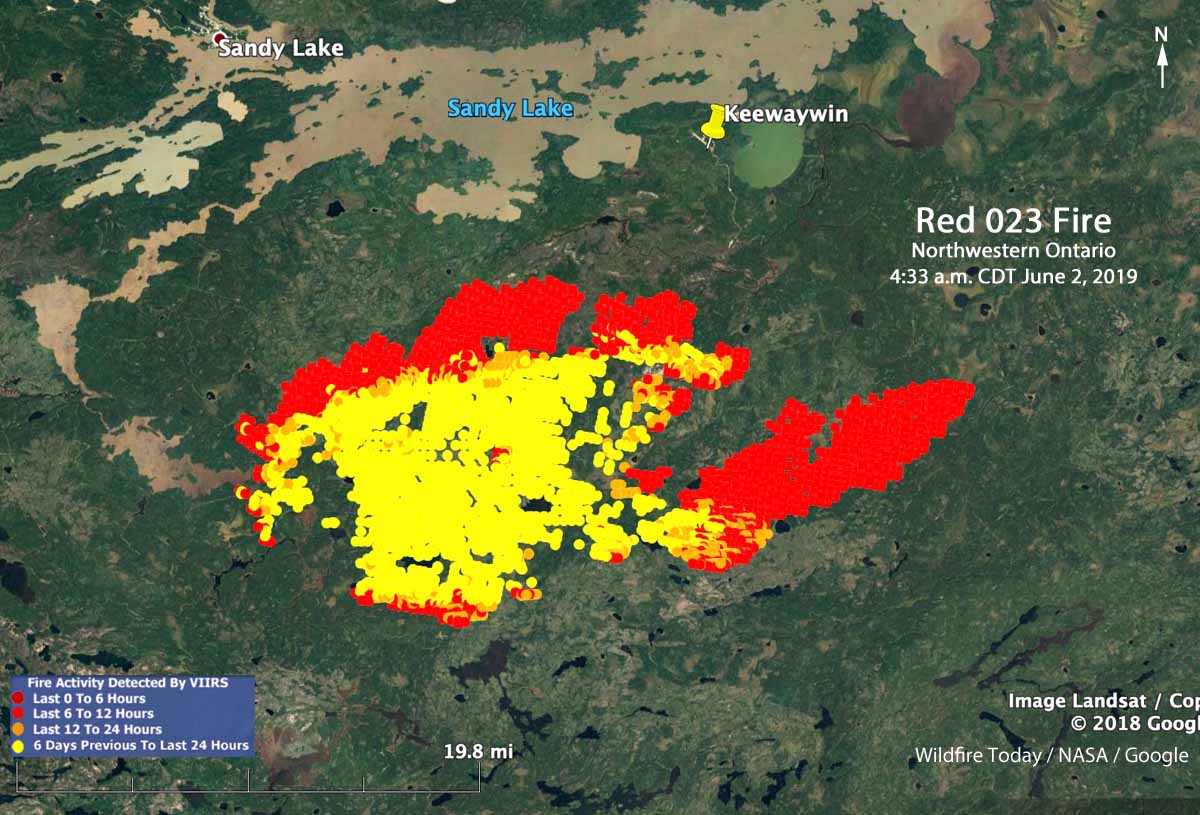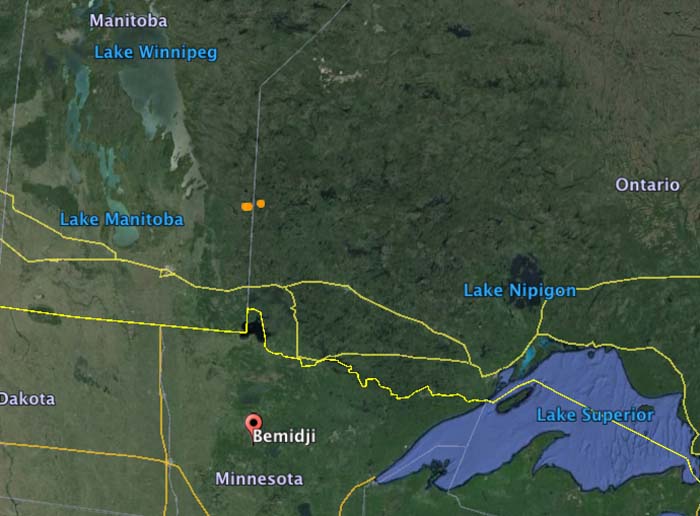
Multiple wildfires in Southern Manitoba grew large Monday pushed by strong winds while the temperature was high and the relative humidity was low. The smoke being produced by the blazes prompted Environment Canada to issue multiple special air quality statements Monday evening.
“Localized areas of smoke are creating reduced visibilities and poor air quality down wind of fires,” the agency said in the statement.

The areas under the air quality statement as of Monday evening include:
- Whiteshell – Lac du Bonnet – Pinawa
- Arborg – Hecla – Fisher River – Gypsumville – Ashern
- Bissett – Victoria Beach – Nopiming Provincial Park – Pine Falls
- Brandon – Neepawa – Carberry – Treherne
- Dauphin – Russell – Roblin – Winnipegosis
- Dugald – Beausejour – Grand Beach
- Grand Rapids – Waterhen
- Selkirk – Gimli – Stonewall – Woodlands
- Ste. Rose – McCreary – Alonsa – Gladstone
Four 10-person teams of firefighters are being brought in from Ontario to assist, while Quebec sent two air tankers and a bird dog aircraft.

The EA044 fire 23 Km (14 miles) west of Gypsumville seen on the map above is very close to another much larger fire. They may be all one fire separated by an area of light vegetation that cooled in between heat-detecting satellite overflights. If they are one, they cover an area of approximately 52,500 hectares (130,000 acres). About 28,300 hectares (70,000 acres) burned at that location Monday during the strong winds.
Below are forecasts produced by FireSmoke Canada for the distribution of wildfire smoke on Tuesday and Thursday. The circles with numbers indicate multiple fires at each location.








